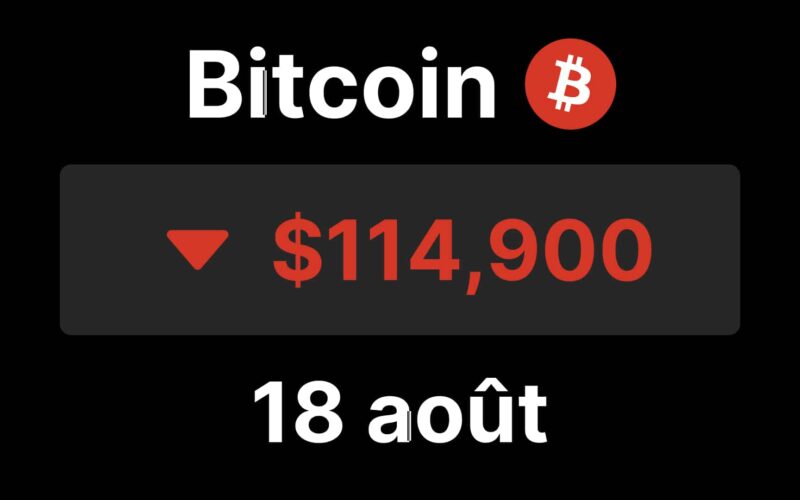Bitcoin Drops Below $115,000 After New ATH, Driven by Increased Macroeconomic Tensions Due to Higher Than Expected US Inflation.
A Brutal Correction for Bitcoin After All-Time Highs
Less than a week after hitting a new ATH of $124,350, Bitcoin sharply dropped back below $115,000. Ethereum also fell to $4,250. The excitement from the recent highs quickly turned into a reality check.
This over 7% decrease in just a few days is significant, reflecting a market on edge, reacting to US economic announcements.
US Inflation Changes the Game
The bullish momentum of Bitcoin was sparked by softer than expected inflation figures. However, optimism waned with the release of July’s Producer Price Index (PPI), showing a 3.3% increase year-over-year. This surpassed expectations, dampening hopes for a Fed rate reduction in September.
Result: the dollar strengthens, investors retreat, and risk appetite evaporates. Bitcoin’s decline clearly reflects investor caution towards a more persistent US inflation than anticipated.
Contradictory Signals from the Institutional Side
While the market appears jittery, ETF flows tell a different story. Data shows that last Friday, funds were pulling out of Grayscale and Ark Invest, while BlackRock continued to see net inflows into its IBIT. A similar scenario unfolds with Ethereum.
According to Rachael Lucas, analyst at BTC Markets, “The drop does not signal surrender, but rather a capital rotation towards less expensive products.” In other words, institutional investors remain in place, but are reallocating their positions.
Technical Levels Under Watch
The $115,000 threshold currently acts as a psychological barrier. If broken, the next support lies around $112,500. Further down, the $110,000 zone emerges as a defensive line.
Caution is advised in the short term, but some signals remain positive: ETFs continue to attract, and corporate allocations provide a floor for the market.
Jackson Hole, the Decisive Event
All eyes now turn to the Jackson Hole symposium, scheduled for this week. A more accommodative speech by the Fed could reignite risk appetite. Conversely, further consolidation could occur.
Another key event: jobless claims figures, expected on August 21st. Yet another indicator capable of swiftly changing market sentiment.
For now, the market remains neutral, awaiting macroeconomic decisions.




